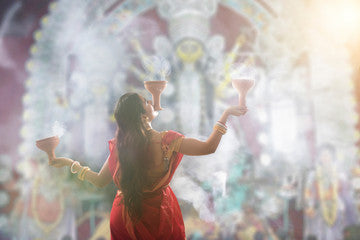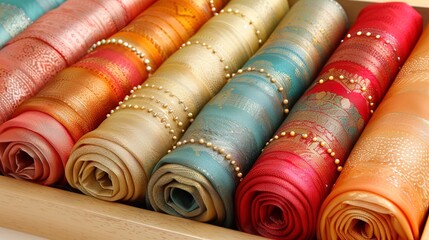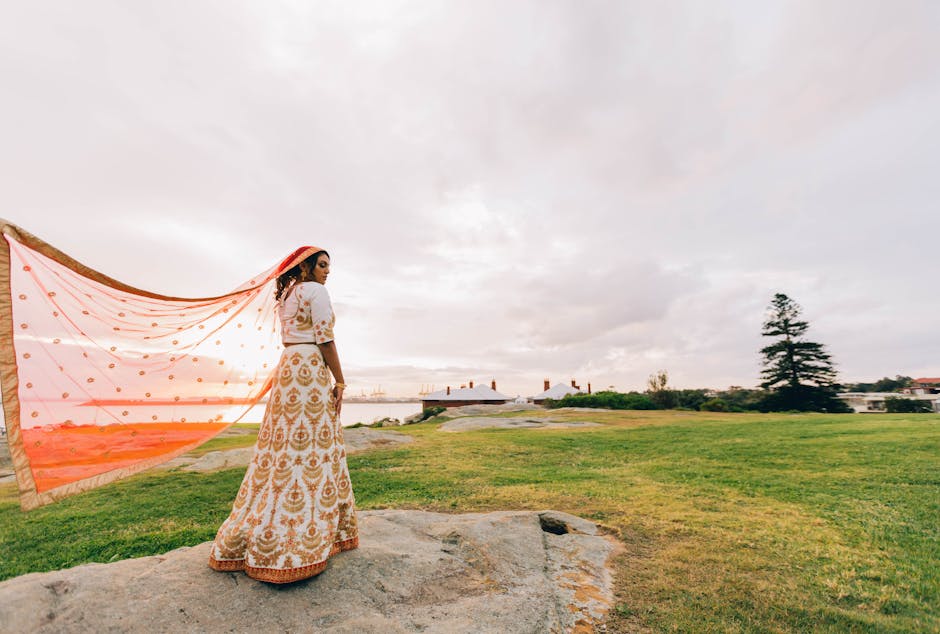Cotton Jamdani Sarees of Bengal: A Legacy Woven Through Time
Discover the rich history and evolution of cotton Jamdani sarees in Bengal. Learn about the intricate weaving process, different varieties, and where to buy authentic Jamdani saree online from trusted sellers like Balaram Saha Online. Experience tradition and elegance with a handloom masterpiece.
The Jamdani saree is a testament to Bengal’s rich textile heritage, known for its intricate craftsmanship and delicate weaving. This exquisite form of handloom weaving, particularly the cotton Jamdani saree, has not only stood the test of time but has also evolved with changing fashion trends. From the royal courts of Bengal to modern-day fashion ramps, Jamdani sarees continue to be a symbol of elegance and cultural pride.
The Origins of Jamdani Weaving
The Dhakai Jamdani saree, with its roots in present-day Bangladesh, has a legacy that dates back over 2,000 years. The name “Jamdani” comes from the Persian words “Jam” (flower) and “Dani” (vase), symbolizing the floral motifs often seen in these sarees. The weaving technique flourished under the patronage of Mughal emperors, who admired the finesse of muslin Jamdani sarees and elevated them to the status of royal garments.
During the Mughal period, the original Dhakai Jamdani saree was handcrafted using the finest muslin fabric, making it one of the most luxurious textiles of that era. However, the British colonial rule significantly impacted this craft, leading to its decline as cheaper mill-made fabrics flooded the market.
The Revival of Cotton Jamdani Sarees
Despite colonial setbacks, the craft of handloom cotton saree weaving in Bengal saw a revival in the late 20th century. Weavers adapted to changing demands by incorporating Jamdani cotton saree designs on cotton and silk blends, making these sarees more affordable and accessible.
In recent years, increased global awareness and demand for sustainable fashion have fueled the resurgence of soft Jamdani saree weaving. Organizations and designers are working closely with weavers to preserve this traditional art form while incorporating contemporary motifs and colors.
The Unique Weaving Process of Jamdani Sarees
One of the most remarkable aspects of Jamdani sarees is the labor-intensive, handloom weaving process. Each saree can take weeks or even months to complete, depending on the complexity of the design. The intricate patterns are woven directly into the fabric using the supplementary weft technique, where extra threads create the signature motifs without the use of additional embroidery or printing.
Unlike modern machine-made textiles, Jamdani saree weaving is a skill passed down through generations of artisans. The designs are not drawn on paper but are memorized and executed with impeccable precision, making each saree a unique masterpiece.
Variations in Jamdani Sarees
There are several types of Jamdani sarees, each with distinct characteristics and weaving patterns. Some of the most popular ones include:
-
Dhakai Jamdani Saree – The most prestigious and intricate variety, originating from Dhaka, Bangladesh.
-
Soft Dhakai Jamdani Saree – A lightweight version, perfect for everyday wear.
-
White Jamdani Saree – Known for its pristine elegance, often preferred for formal and religious occasions.
-
Muslin Jamdani Saree – Made from ultra-fine muslin fabric, known for its sheer texture and intricate detailing.
-
Jamdani Saree Bangladesh – A heritage weave still crafted by skilled artisans in Bangladesh, maintaining traditional techniques.
-
Cotton Jamdani Saree – A versatile, breathable, and comfortable option suitable for various climates and occasions.
Why Choose a Handloom Cotton Jamdani Saree?
In an era dominated by synthetic fabrics and machine-made clothing, choosing a handloom cotton saree is an ethical and sustainable choice. Here are some reasons why these sarees are timeless investments:
-
Eco-Friendly: Made using traditional, non-polluting methods with natural dyes.
-
Durable: Unlike synthetic fabrics, handwoven Jamdani cotton sarees age gracefully.
-
Unique Designs: No two sarees are identical, offering exclusivity to the wearer.
-
Cultural Heritage: Owning a Jamdani saree means being a part of Bengal’s centuries-old textile tradition.
Buying Authentic Jamdani Sarees Online
With the increasing demand for handloom textiles, several platforms now offer authentic Jamdani saree online shopping experiences. However, buyers must be cautious of counterfeit products. To ensure authenticity, always purchase from reputable sources such as Balaram Saha Online, a trusted name in Bengal’s handloom industry.
The Future of Jamdani Sarees
As fashion trends evolve, Jamdani sarees continue to adapt while maintaining their core essence. Designers are experimenting with contemporary color palettes, fusion styles, and even digital enhancements to appeal to younger generations. The demand for soft Jamdani sarees is increasing globally, with fashion influencers and celebrities embracing these weaves on red carpets and social media platforms. The versatility of a Jamdani cotton saree makes it a must-have in every saree lover’s wardrobe.
Conclusion
The journey of cotton Jamdani sarees from their Mughal-era opulence to their modern-day resurgence is a remarkable testament to the resilience of Bengal’s weavers. Whether it’s an original Dhakai Jamdani saree or a white Jamdani saree, each piece tells a story of tradition, artistry, and cultural significance.
For those looking to embrace the elegance of Bengal’s handloom heritage, buy online from Balaram Saha and add a timeless Jamdani saree to your collection today.





